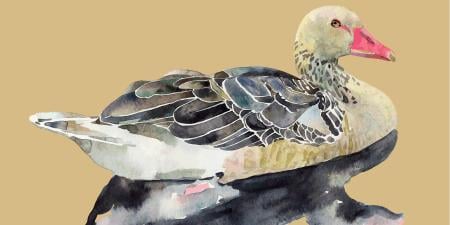Case
Mrs. Ludford, a 48-year-old mother of two, has been in the care of a Connecticut nursing home for the past five years. A passionate horseback rider, she was thrown from a horse while crossing a creek at the age of 43. She hit her head on a rock and was partially submerged in the creek’s water for approximately 15 minutes before her riding partner found her. She was diagnosed by at least three different neurologists as being in a persistent vegetative state (PVS) due to severe hypoxic brain damage. Over the years, despite good care, she had developed numerous complications: repeated pulmonary, urine, and skin infections and a decubitus ulcer. Most recently, she had developed what was suspected to be a massive stroke, for which she had been hospitalized in the intensive care unit (ICU) of a nearby medical center. There was no way to assess the extent of damage caused by the stroke due to her inability to undergo neurological exams while in PVS.
Her neurologist felt that the likelihood of Mrs. Ludford emerging from PVS after five years was slim to none. In addition to this assessment, the nurses taking care of the patient at her home facility expressed their frustration about having to care for a woman whom they felt was being maintained in a “living death” for what seemed like an indefinite period of time. It was the unanimous opinion of the care team that Mrs. Ludford’s needs were not best met in an intensive medical environment and that she should be referred to a palliative care service for comfort care.
The patient’s husband and two children—both of whom were now adults—had always insisted that the patient be treated aggressively to keep her alive as long as possible, regardless of her neurologic state. They had repeatedly expressed to the medical care team that they wanted everything to be done for her, “no matter how much it costs.” When the option of transferring Mrs. Ludford to palliative care was discussed with the family, they became extremely upset. They expressed a feeling of betrayal at the fact that the institution and the medical team responsible for their mother’s care were “giving up.” They considered transferring her to a different organization, but because she was too medically unstable, this was not an option. Thereafter the family refused to talk to her doctors. They threatened legal action if the hospital withheld or withdrew aggressive acute care.
An ethics consultant became involved at the request of Mrs. Ludford’s physicians, in hopes that she could facilitate communication between the caregivers and family members. However, upon learning that several of the hospital’s physicians were members of the ethics committee, the family members became wary of the ethics consultant. They eventually decided that they did not want to discuss the matter with the ethics consultant and refused to meet with or talk to anyone associated with the ethics committee. Some physicians saw this refusal as a way of stalemating the process and thus forcing Mrs. Ludford’s medical care to continue; others, including members of the ethics committee, saw it as an understandable reaction given the family’s mistrust of the hospital. There was disagreement among members of the ethics committee as to whether the committee should remain involved in the case.
Commentary
In bioethics consultation, process matters. How we gather information and manage relationships makes a difference to the outcome. The ethics consultant (or team) must follow a standardized process and carefully heed stakeholders’ voices. Doing so helps promote the values of the patient, clarifies ethically justifiable options, facilitates acceptance and implementation of a resolution, and stimulates the education of all involved. The case of Mrs. Ludford and her family demonstrates a missed opportunity for bioethics consultation to bring together those caring for the patient with those who love her.
Process Starts at the First Contact
Process matters from the first contact with the requester, for it sets the tone for all that follows. The bioethics consultant should (1) clarify the ethics question and other issues in the case, listening carefully to the requester to understand the sources of ethical complexity or conflict, which might be difficult for the requester to articulate; (2) identify and include stakeholders in deliberations; (3) inquire how the requester hopes a bioethics consultation will help; and (4) uncover and address any misconceptions about the bioethics consultant’s role [1]. Furthermore, ethical issues are often only one source of complexity or conflict in a multifaceted case involving practical, clinical, psychosocial, legal, and other features. The consultant should clarify the nature, scope, and role of the bioethics team while connecting the requester with other appropriate resources when necessary [2].
Common misconceptions about bioethics consultation or consultants are that they can protect clinicians from litigation, substitute for the clinical team in breaking bad news, or quickly endorse the team’s preferred plan without engaging in a thorough analysis of the ethical issues [1]. Particularly with conflicts about what the goals of care should be, a requester might hope to enlist the bioethics consultant as an ally against other stakeholders. The consultant must explain that a good conflict resolution process includes considering stakeholders’ perspectives, promoting dialogue, and facilitating consensus.
After speaking with the requester, the bioethics consultant gathers information from the patient’s health record and other stakeholders, including the patient’s family and clinicians. The consultant should approach each subsequent conversation in a similar fashion and listen carefully, clarify the role of bioethics, and address any misconceptions. It is also crucial to spend time with the patient, including those patients who are unable to express their own perspectives and values. Secondhand impressions are no substitute for observing the actual person at the center of a clinically and ethically complex dilemma [3, 4].
Sensitivity to Language as a Tool of Bioethics Consultation
Many cases referred for bioethics consultations involve a breakdown in communication. Relying on basic communication skills, such as listening attentively and communicating in a precise and empathic fashion, a bioethics consultant permits stakeholders to share anger, sorrow, and other emotions; ask questions; and articulate concerns. The consultant notes how each stakeholder frames the case or conflict; a person’s words reveal clues about their values and goals and illuminate different perspectives on the conflict. Telling one’s story and feeling heard and respected can also facilitate collaboration.
In this case, the team’s language has likely deepened the conflict. The family is characterized by the team as “stalemating the process and thus forcing Mrs. Ludford’s medical care to continue.” Life-prolonging interventions are often labeled “aggressive,” as in the description of this case, while the alternative is described as ceasing care altogether. No wonder Mrs. Ludford’s family concluded that the team was “giving up.” In contrast, we learn almost nothing of the understanding, experience, or values of Mrs. Ludford or her family, suggesting that the team has not adequately attended to their perspectives.
Responding to the clinical team’s concerns. Hearing this language, a skilled bioethics consultant would acknowledge the team’s frustration and concerns but communicate that the role of bioethics is not to help extract an agreement from the family to stop medical care for someone they love. Mrs. Ludford and her family deserve medical care. Reasonable people can debate what constitutes optimal goals of that care (comfort, life prolongation, minimizing burden to family, and others), but the presence of an ethical obligation to provide care for Mrs. Ludford and her family stands beyond question.
Responding to the family’s concerns. It is unclear how Mrs. Ludford’s family members learned about the bioethics consultation and whether they were introduced directly to any members of the consultation team. However they learned of the consultation, it increased rather than decreased distrust, which means this crucial step in the consultation process failed. The family mistrusts the bioethics consultation team because it includes some hospital physicians. Our experience has been that listening to and valuing family members’ perspectives, as well as visiting the patient and demonstrating respect for her as a person, helps build trust. Bioethics consultants should acknowledge that they are hospital employees but stress that they promote the interests of both the hospital and the family by helping them find common ground.
Stating the Ethics Question
Framing clear ethics questions helps stakeholders better understand the problem and the values at stake and ensures that the consultant is addressing the issues that prompted the request for help [1]. In this case, possible ethics questions include the following:
- Given Mrs. Ludford’s poor prognosis for recovery to her baseline level of function, is it appropriate to offer intensive care?
- Given Mrs. Ludford’s poor baseline level of function, is life prolongation an appropriate goal of treatment?
- How can conflict between the ICU team and Mrs. Ludford’s family be addressed in order to optimize shared decision making and negotiate achievable goals of care?
- Under which circumstances is it ethically justifiable for the clinical team not to offer a particular treatment or intervention, even if Mrs. Ludford’s family demands it?
- What are the clinical team’s obligations to Mrs. Ludford’s family, even if agreement is not reached on goals of care?
Any of these questions might apply, depending on Mrs. Ludford’s current clinical status and prognosis.
Choosing an Intervention
Three tools available to a bioethics consultant in this case include mediation, clarifying policy, and coaching the team on communication strategies. Finding an appropriate strategy depends on the nature of the ethics question. This case, at heart, reveals a breakdown in shared decision making and conflict over what are appropriate, achievable goals of care. In the case presentation, the focus is on conflict about specific interventions—ICU care, life-prolonging treatment, and transfer to the palliative care service. But what is at stake, really, is which goals those interventions can realistically achieve and whether those goals are appropriate. This case also raises questions about the appropriate roles for the team and family members in shared decision making, especially if the family continues to pursue clinical outcomes the team finds unrealistic.
Mediation. Mediation can often help resolve conflicts over goals of care by bringing the involved parties to consensus around an ethically justifiable plan [4]. Even if consensus is not reached, facilitated dialogue improves shared decision making and builds trust. A clinical team can gain appreciation for a family’s understanding, experience, goals, and values, and for who the patient is as a person. A family can gain understanding about the patient’s prognosis, treatment options, and the benefits and burdens of each option. Unfortunately, Mrs. Ludford’s family members decline to participate and forgo opportunities to voice their perspectives and concerns during a meeting. We cannot be sure, but it seems that inattention to process helped derail this consultation. The bioethics consultant should try to forge a relationship with Mrs. Ludford’s family, but the level of mistrust could prevent this.
Clarification of policy. Policy clarification is another way for bioethics to help a team and does not require cooperation from a patient’s family. The hospital in this case might have two policies that deserve consideration: for example, one delineating how ICU triage decisions are made and another guiding clinicians in so-called “futility” conflicts. However, merely clarifying organizational policies does not substitute for the mediation process described above and is unlikely to address the ethics questions raised in this case. An ICU triage policy, for example, might delineate limits to surrogate authority over decisions about where care is provided, and a “futility” policy might outline processes for transferring patients when attempts to resolve conflict fail. Relying on such clauses to bypass the work of building relationships with families would be a missed opportunity, however. Moreover, clinicians’ obligations to support and demonstrate respect for family members of critically ill patients, even when their goals are unrealistic, would go unfulfilled.
Communication coaching. Coaching is another tool that might help communication in this case. Even without the participation of Mrs. Ludford’s family, the consultant can counsel the team about communicating with the family to improve their relationship, build trust, and enhance shared decision making. [5] For instance, the team could ask Mr. Ludford and the children to share stories about Mrs. Ludford and how her accident has changed their lives. Doing so demonstrates respect for the patient as a person and signals willingness to listen, and not just talk [4].
The bioethics consultant should urge the team members to clarify and communicate clearly what they know and don’t know about Mrs. Ludford’s prognosis. Prognosis is a crucial factor in determining what goals each treatment option can achieve and for distinguishing interventions that are only harmful and need not be offered from those that are subjects of disagreement about appropriate goals. If Mrs. Ludford is dying regardless of treatment, irrespective of whether or not she remains in the ICU, perhaps the team should set aside the discussion about interventions and focus on support for the grieving family members.
If, on the other hand, Mrs. Ludford’s prognosis could include a return to her baseline level of function, the team should explore what Mrs. Ludford would consider a life worth living. By assisting her family in applying these values to decisions, the team could lay a foundation for negotiating realistic goals of care. In any case, productive discussion requires clear information about prognosis and the potential benefits and burdens of each treatment option.
Recommendations
Given that the perspectives of important stakeholders—namely, Mrs. Ludford and her family members—are missing, the consultant here can only give general guidance to the team about process. No recommendation predicated upon case specific information is appropriate without incorporating the family members’ perspectives into any plan. Given the lopsided nature of stakeholder participation in this case, we would avoid recommending for or against unilateral withdrawal of life-sustaining treatment, for this would be to “side” with one party in the conflict.
Addressing Moral Distress Among Clinicians and Identifying Systems Issues
Moral distress occurs when clinicians find they are prevented from providing what they believe to be the right care for a patient. Mrs. Ludford’s nurses described her life as a “living death,” suggesting they experienced considerable moral distress. A bioethics consultant could offer to meet with distressed clinicians, creating a forum to share concerns [6]. The consultant also identifies systems issues, which should be addressed through institutional policy or education. In this case, the consultant might identify educational needs about best practices for ethics consultation and communication.
Documentation
The final step in a bioethics consultation is to document the consultation—including background information, ethics questions, recommendations, and analysis supporting those recommendations. A clear note in a patient’s health record can educate clinical teams about common ethics issues, bring the voices and perspectives of patients and families into the health record, and document how the bioethics consultation process impacted the patient’s plan of care [7].
Conclusion: Educating Bioethics Consultants
Bioethics consultation is an evolving and relatively new field. Practice varies widely. Unfortunately, not all who perform consultations have pursued relevant education, although opportunities for consultation training are increasing. The American Society for Bioethics and Humanities (ASBH) is developing standards for consultation competence and is piloting a method of assessing individual consultants [8]. Did this particular consultation process break down because of a lack of skill and training? It is impossible to know. Certainly the need for bioethics consultations can arise when communications between clinicians and families fail, as in this case. Unfortunately, whether due to a lack of attention to process or too deep a well of mistrust, consultants in this case might not be able to repair the rift. Still, even when family members decline to meet with bioethics consultants, we can coach colleagues, educate stakeholders about policy and communication, and work toward providing ethically robust health care.
References
-
Berkowitz KA, Chanko BL, Foglia MB, Fox E, Powell T; National Center for Ethics in Health Care. Ethics Consultation: Responding to Ethics Questions in Health Care. 2nd ed. Washington, DC: US Department of Veterans Affairs; 2015. http://www.ethics.va.gov/docs/integratedethics/ec_primer_2nd_ed_080515.pdf. Accessed March 27, 2016.
- Carrese JA, Antommaria AH, Berkowitz KA, et al. American Society for Bioethics and Humanities Clinical Ethics Consultation Affairs Standing Committee. HCEC pearls and pitfalls: suggested do’s and don’t’s for healthcare ethics consultants. J Clin Ethics. 2012;23(3):234-240.
-
American Society for Bioethics and Humanities. Core Competencies in Healthcare Ethics Consultation. 2nd ed. Glenview, IL: American Society for Bioethics and Humanities; 2011.
-
Dubler NN, Liebman CB. Bioethics Mediation: A Guide to Shaping Shared Solutions. Nashville, TN: Vanderbilt University Press; 2011.
- Edelstein LM, Lynch JJ, Mokwunye NO, DeRenzo EG. Curbside consultation re-imagined: borrowing from the conflict management toolkit. HEC Forum. 2010;22(1):41-49.
- Epstein EG, Hamric AB. Moral distress, moral residue, and the crescendo effect. J Clin Ethics. 2009;20(4):330-342.
-
Dubler NN, Webber MP, Swiderski DM; Faculty and the National Working Group for the Clinical Ethics Credentialing Project. Charting the future. Credentialing, privileging, quality, and evaluation in clinical ethics consultation. Hastings Cent Rep. 2009;39(6):23-33.
- Kodish E, Fins JJ, Braddock C 3rd, et al. Quality attestation for clinical ethics consultants: a two-step model from the American Society for Bioethics and Humanities. Hastings Cent Rep. 2013;43(5):26-36.



